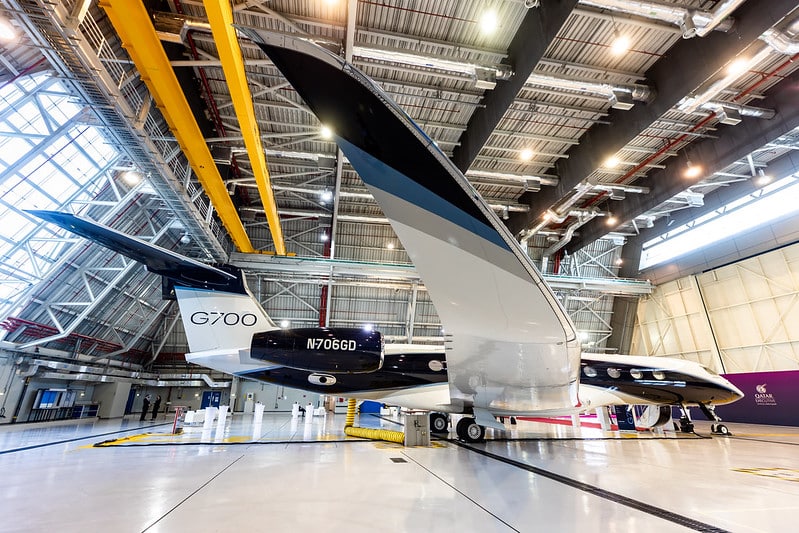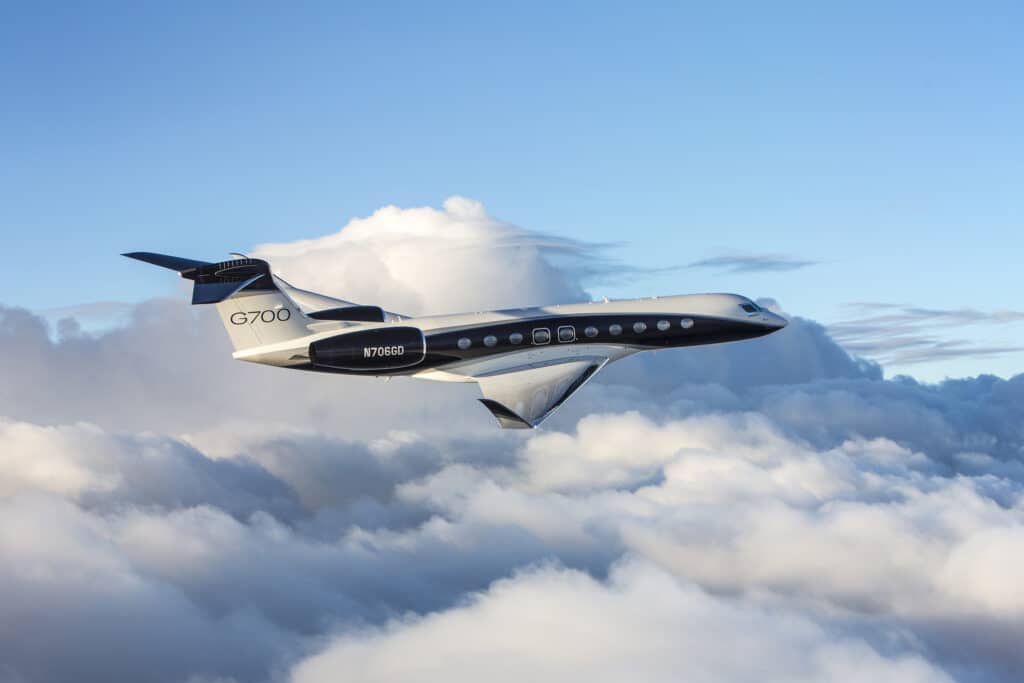Aerospace
Inside Elon Musk’s new US$78 million Gulfstream G700 and features
Elon Musk’s private jet fleet: $78 million Gulfstream G700

Elon Musk is highly renowned for his creativity and investments in technological advancements. But he recently ordered a high-end Gulfstream G700 private jet, a brand-new model. Early 2023 is the delivery window. He recently paid $44 billion for Twitter, which is currently trending for his new private plane.
Up to 19 passengers can board this aircraft, which has the largest cabin in the history of the Gulfstream fleet and has a maximum flying altitude of 51000 feet. The most recent cost of this opulent plane is up to $78 million.
The G700 has a range of up to 7,500 nautical miles or enough distance to travel nonstop from Austin to Hong Kong, according to the Gulfstream website. It boasts two restrooms, two Rolls-Royce engines, large oval windows, and a Wi-Fi system of its own.
[adinserter block=”2″]
Gulfstream G700 and G800 earn EASA certification(Opens in a new browser tab)
Currently own four private jets, one of which is a Glufsteram G 650 that sparked discussion on social media after being tracked by a Twitter user. Elon Musk asked him to remove the tracking and also made a generous offer of cash. But for him, it didn’t work out. Therefore, it is likely that he is currently updating his fleet and programming codes for flight data records that are hidden from users of the public internet.
ALL-NEW GULFSTREAM G800 MAKES FIRST FLIGHT.(Opens in a new browser tab)
The G700 has a range of up to 7,500 nautical miles or enough distance to travel nonstop from Austin to Hong Kong, according to the Gulfstream website. It boasts two restrooms, two Rolls-Royce engines, large oval windows, and a Wi-Fi system of its own.
[adinserter block=”2″]
Currently own four private jets, one of which is a Gulfstream G 650 that sparked discussion on social media after being tracked by a Twitter user. Elon Musk asked him to remove the tracking and also made a generous offer of cash. But for him, it didn’t work out. Therefore, it is likely that he is currently updating his fleet and programming codes for flight data records that are hidden from users of the public internet.
This jet’s operation is both difficult and expensive. The important factors affecting the jet’s costs are its fuel consumption and engine overhaul.
[adinserter block=”2″]
In addition to its high initial cost, operating the G700 can be expensive. According to Liberty Jet, flying the jet for 400 hours can result in operating costs of about US$3.5 million. According to the aviation website, the most expensive components of running the plane are fuel and engine maintenance.
According to Bloomberg, the new design is the “extended” version of the G650 and attempts to compete in size with the Bombardier 7500. According to Gulfstream, it is eight meters (25 feet) tall and 33 meters (109 feet) long.
[adinserter block=”2″]
The little but mighty G700 can travel nonstop from Singapore in Asia to San Francisco in the US because to its range of 13,900 km (7,500 nautical miles). According to the aforementioned Gulfstream spec sheet, the G700’s cruise speed is Mach 0.925.
Let us know in the comments what you think of Elon Musk’s new Gulfstream G700.

Aerospace
Boeing Transfers Rocket Stage to NASA, Paving Way for Human Moon Mission

Boeing has achieved a significant milestone by providing NASA with the second core stage of the Space Launch System (SLS) rocket.
This crucial component, crafted at NASA’s Michoud Assembly Facility (MAF), is set to propel the Artemis II crew into lunar orbit, marking humanity’s return to deep space after a 50-year hiatus.
The monumental Boeing-built rocket stage, the largest element of the Artemis II mission, will embark on a journey aboard the Pegasus barge, traveling 900 miles to NASA’s Kennedy Space Center.
Comparison of two legendary aircraft B777x vs B747 aircraft:Click here
Upon arrival, it will be meticulously integrated with other essential Artemis II components, including the upper stage, solid rocket boosters, and NASA’s Orion spacecraft within the iconic Vehicle Assembly Building. This intricate integration process is a vital step toward the eagerly anticipated Artemis II launch, slated for 2025.
“Boeing-built products helped land humankind on the moon in 1969, and we’re proud to continue that legacy through the Artemis generation,” remarked Dave Dutcher, vice president and program manager for Boeing’s SLS program. “Together, with NASA and our industry partners and suppliers, we are building the world’s most capable rocket and paving the way to deep space through America’s rocket factory in New Orleans.”
NASA, Lockheed Martin Reveal X-59 Quiet Supersonic Aircraft:Click here
The delivery of Core Stage 2 marks a significant achievement in the evolution of the SLS rocket. Towering over 200 feet and powered by four RS-25 engines, this core stage, coupled with two solid-fueled booster rockets, will generate a staggering 8.8 million pounds of thrust. This immense power is crucial to launching Artemis II and future missions into the vast expanse of space.
The SLS rocket stands unparalleled in its capability to transport both crew and substantial cargo to the moon and beyond in a single launch. Its extraordinary capacity will facilitate the delivery of human-rated spacecraft, habitats, and scientific missions to destinations including the moon and Mars, ushering in a new era of space exploration.
-

 Travel1 week ago
Travel1 week agoAir India to Expand US Operations with Three New Routes After a Decade
-

 Travel2 weeks ago
Travel2 weeks agoWhy We Should Avoid These Stamps in a Passport
-

 Airlines1 month ago
Airlines1 month agoInvestigations Reveal Fake Chinese Titanium in Boeing and Airbus Jets
-

 Tech4 weeks ago
Tech4 weeks agoChina’s CATL Plans 1,800-Mile Electric Plane Launch by 2027
-

 Airport3 days ago
Airport3 days agoTop 10 Largest Airports in the World by Size
-

 Aerospace4 weeks ago
Aerospace4 weeks agoChina’s Fighter Jets Turn Wings into Autonomous Drones
-

 Airlines4 days ago
Airlines4 days agoAir India Rolls Out A350s for Delhi-New York JFK and Newark Routes
-

 Defence3 weeks ago
Defence3 weeks agoBoeing Enhances Chinook with New Engines and Block II Upgrades at $96 Million











